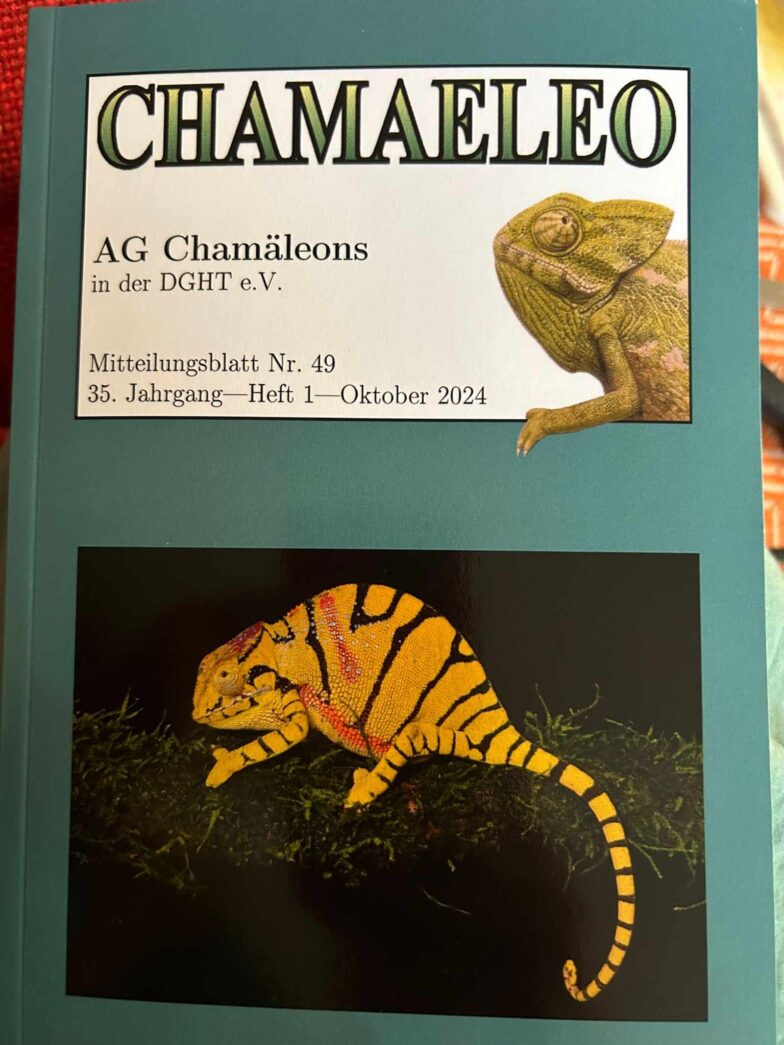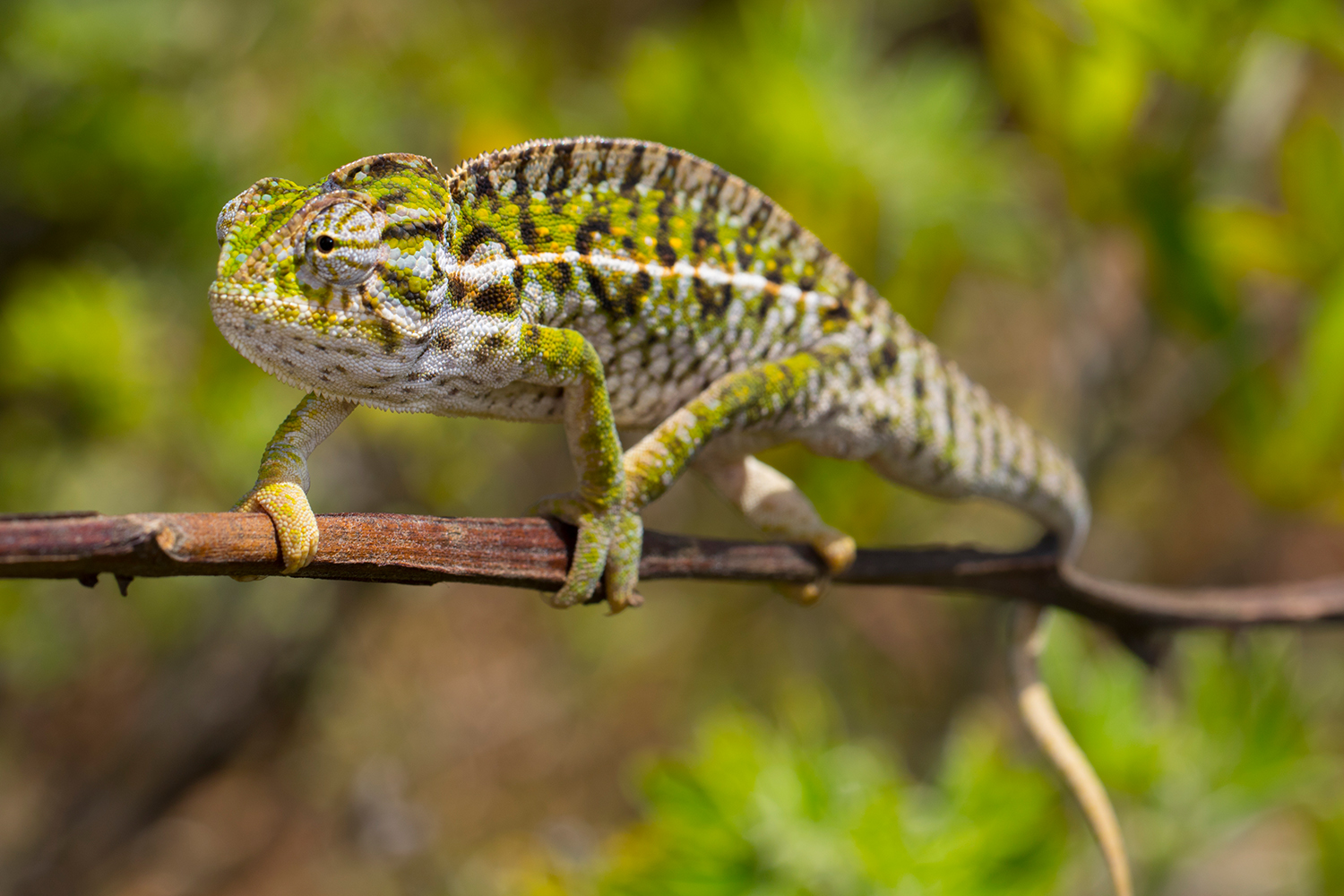Good things come to those who wait: we have just received the latest issues of CHAMAELEO 49. They will now go into the mail as soon as possible and will then be on their way to all AG members. The current contents can be found here. And if you are not yet a member of the AG Chameleons, you might want to become one soon! How do you like the current issue? Do you have any comments, wishes or criticism? Too thick, too thin, too much English, too little? ;) We look forward to your feedback!
Impact of agriculture on chameleons in Madagascar
ScienceIn Madagascar’s eastern highlands, farmland for rice fields is mainly obtained by slashing and burning primary forests or secondary vegetation. The rice fields are only used for one season. The following year the field is used for root vegetables. After just one harvest, the land lies fallow for up to five years before it is slash-and-burned again to grow rice again. Just five of these cycles can turn fertile land into degraded. In recent decades, fallow land has been cleared at ever shorter intervals. This practice has allowed invasive, non-native plant species to spread, while Malagasy plants that depend on primary forest have disappeared. Malagasy scientists have now investigated the impact of this form of agriculture on chameleons on the east coast of Madagascar.
The Ankeniheny-Zahamena rainforest corridor in the eastern highlands was used as the object of study. It runs along the east coast of Madagascar over an area of around 5000 km², some of which are only connected by very narrow forest fragments. A total of 44 sites were investigated during the rainy season, which were categorised into five habitat types: Ten sites with closed canopy rainforests, eight with tree fallows, eleven with shrub fallows, ten sites after at least five slash-and-burn cycles (degraded land) and five sites where reforestation was practised. The majority of chameleons were searched for, identified and measured at night along predefined transects (three to four parallel lines each 50 metres long).
A total of 15 chameleon species of the genera Brookesia, Furcifer and Calumma were found, although three species could not be precisely identified (as far as recognisable, these are animals from the Calumma nasutum/emelinae complex). Most chameleons favoured closed rainforest, whereas significantly fewer animals and species were found after slash-and-burn clearing. In forest areas with reforestation efforts, the number of chameleons was significantly higher than in degraded areas. Both emphasise the need to protect remaining rainforests as well as the relevance of reforestation in Madagascar.
Six species (including Calumma cf. vencesi, Brookesia superciliaris, Brookesia therezieni, Calumma parsonii) were clearly more sensitive to agriculture and can probably only survive to a very limited extent outside primary forest. Only three species were found on intensively farmed land, of which only Furcifer lateralis was most frequently found there.
Effects of shwidden agriculture on chameleon diversity and abundance in eastern tropical rainforest in Madagascar
Rodlis Raphali Andriantsimanarilafy, Joseph Christian Randrianantoandro, Josué Rakotoarioa, Alain Jean Victorien Rakotondrina, Ruth Kelly, Alison Cameron
Sustainability and biodiversity conservation 3(2): 99-118.
DOI: 10.5281/zenodo.13861065
Photo: Carpet chameleon at the edge of a rice field in Madagascar, photographed by Alex Negro
Mosquito bites may induce skin colour change
Tiermedizin ScienceSometimes science starts small: last year, someone posted a photo of a Calumma globifer with a mosquito sitting on it on the online platform iNaturalist. Right there you could see a black discoloration of the scales. I wonder if there was a connection?
A handful of curious people searched for more photos of mosquitoes on chameleons and found what they were looking for: On Facebook there were some of Veiled chameleons, on iNaturalist more of Furcifer minor and Furcifer nicosiai. However, there were also six observations of mosquitoes on chameleons that did not appear to have black spots.
To test the connection, scientists in Madagascar placed two Furcifer oustaleti and four carpet chameleons alone in an enclosure with 25 female Asian tiger mosquitoes (Aedes albopictus), which had not been fed for 24 hours beforehand. At the same time, all six chameleons were pricked in the skin with a needle to test whether this “trauma” would also trigger a color change in the skin. The results were surprising: in the four Furcifer lateralis, numerous black skin discolorations developed after mosquito bites, in the two Furcifer outaleti not a single one. The punctures with the needle remained without consequences in all six.
The authors of the recently published article propose three possible theories as to how the color change in the chameleon’s skin could come about: The mosquito saliva could contain a type of local anesthetic, nitric oxide or other proteins that cause the skin’s melanophores to become exclusively visible. Further research in this field would certainly be exciting!
Mosqito bite-induced color change in chameleon skin
Pablo Garcia, Raul E. Diaz Junior, Christopher V. Anderson, Tovo M. Andrianjafy, Len de Beer, Devin A. Edmonds, Ryan M. Carney
Herpetological Review 54(3), 2023, pp.353-358
Influence of UV-B on growth
Short messages ScienceAn interesting husbandry experience from the USA was presented in a short note in the Herpetological Review. Twelve carpet chameleon hatchlings (Furcifer lateralis) from the same clutch were divided into four groups of three animals each. During the first ten weeks after hatching, two groups were provided with a daily UV index of up to 3 for 12 h, the other two groups with a UV index of up to 7. Reptisun 5.0 was used to achieve the different UV indices. Measurements were taken with the Solarmeter 6.5. The chameleons were allowed to avoid UVI up to 0. After six, eight and ten weeks, the carpet chameleons were measured and weighed. It was noticed that in weeks 6 and 10, the groups with the lower UV index were up to 25% heavier than the comparison groups.
The two authors conclude that higher UV indices during rearing in the first weeks could lead to slower growth rates in carpet chameleons. This would correspond to the observation in nature that young animals “sunbathe” rather rarely and stay more hidden in the bushes. Due to the small group of test subjects and mixed groups instead of individual keeping, you must still be cautious with conclusions here. In addition, it is unfortunately still largely unexplored whether and how chameleons can regulate their vitamin D3 regulation in artificial light compared to natural sunlight. Nevertheless, it is a very interesting approach that is certainly worth pursuing.
Furcifer lateralis (carpet chameleon): Impact of Ultraviolet Light on growth
Michael J. Nash, Christopher V. Anderson
Herpetological Review 52 (2), 2022





